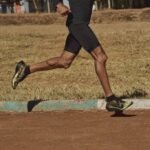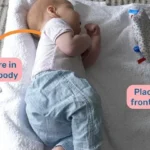Alternatives to Back Surgery: Most Effective Non-Surgical Solutions

Back pain is a common ailment that affects millions of people worldwide. It can be debilitating, affecting one's ability to perform daily activities and reducing overall quality of life. While back surgery is often considered as a last resort for severe and chronic back pain, it is not always the best or only solution. There are numerous alternatives to back surgery that can provide significant relief from pain and improve functionality. These non-surgical solutions range from spinal injections and radiofrequency ablation to prolotherapy and high-intensity physical therapy. This article will explore these alternatives in detail, providing a comprehensive guide for those seeking non-surgical solutions to back pain.
- Understanding Spinal Injections
- Exploring Radiofrequency Ablation
- Prolotherapy: A Regenerative Approach
- High-Intensity Physical Therapy for Back Pain
- Manipulation-Based Therapy: A Hands-On Approach
- Mind-Body Therapy: The Psychological Aspect of Pain Management
- Schroth Exercise: A Solution for Scoliosis
- Vertebroplasty and Kyphoplasty: Minimally Invasive Procedures
Understanding Spinal Injections
Spinal injections are a common non-surgical treatment for back pain. They involve injecting medication directly into the area around the spinal cord to reduce inflammation and alleviate pain. There are several types of spinal injections, each targeting different areas and conditions. One of the most common types is the epidural steroid injection, which is often used to treat pain caused by herniated discs, spinal stenosis, or other conditions that cause inflammation around the spinal nerves. The medication, usually a corticosteroid, is injected into the epidural space, the area between the protective covering of the spinal cord and the bony vertebral wall. This reduces inflammation and swelling, relieving pressure on the nerves and decreasing pain.
Other types of spinal injections include selective nerve root block injections, facet joint injections, and medial branch blocks. Selective nerve root block injections are used to determine the specific source of pain and to treat inflammatory conditions affecting the nerve roots. Facet joint injections are used to treat arthritis in the facet joints, which are small joints at each segment of the spine that provide stability and help guide motion. Medial branch blocks are used to diagnose and treat back or neck pain that originates from the facet joints. Each of these injections can provide significant relief from back pain, making them effective alternatives to back surgery.
Exploring Radiofrequency Ablation
Radiofrequency ablation is another non-surgical treatment for back pain. It involves using a high-frequency electrical current to heat up a small area of nerve tissue, thereby decreasing pain signals from that specific area. The procedure is done under local anesthesia and involves inserting a small, insulated needle into the skin. Once the needle is positioned near the targeted nerve, an electrical current is passed through, creating a heat lesion on the nerve. This disrupts the nerve's ability to send pain signals to the brain, providing relief from pain.
Radiofrequency ablation is typically used to treat chronic low back and neck pain, as well as pain related to the degeneration of joints from arthritis. It is a minimally invasive procedure that can provide long-lasting relief from pain, often up to a year or more. This makes it an effective and viable alternative to back surgery for many patients.
Prolotherapy: A Regenerative Approach
Prolotherapy is a regenerative treatment for back pain that works by stimulating the body's own healing mechanisms. It involves injecting a solution, usually a mixture of dextrose (sugar water) and local anesthetic, into the affected ligaments, tendons, or joints. This causes a localized inflammation in these weak areas, which then increases the blood supply and flow of nutrients, stimulating the tissue to repair itself.
Prolotherapy can be used to treat a variety of conditions, including chronic back pain, degenerative disc disease, and sacroiliac joint instability. It is a safe and effective treatment that can provide significant relief from pain and improve functionality. As a regenerative approach to treating back pain, prolotherapy is a promising alternative to back surgery.
High-Intensity Physical Therapy for Back Pain
Physical therapy is a well-known non-surgical treatment for back pain. It involves a series of exercises and stretches designed to strengthen the muscles that support the spine, improve flexibility, and increase range of motion. High-intensity physical therapy takes this a step further by incorporating high-intensity exercises into the treatment plan. These exercises are designed to build strength and endurance, improve cardiovascular health, and promote weight loss, all of which can help alleviate back pain.
High-intensity physical therapy can be an effective treatment for a variety of conditions, including herniated discs, spinal stenosis, and degenerative disc disease. It is a safe and non-invasive treatment that can provide significant relief from pain and improve overall functionality. This makes it a viable alternative to back surgery for many patients.
Manipulation-Based Therapy: A Hands-On Approach
Manipulation-based therapy is a hands-on approach to treating back pain. It involves using manual force to improve the alignment and functionality of the spine. There are several types of manipulation-based therapy, including chiropractic adjustments, osteopathic manipulation, and physical therapy manipulation. These treatments can help alleviate back pain by reducing pressure on the spinal nerves, improving blood flow, and increasing flexibility.
Chiropractic adjustments involve applying a controlled, sudden force to a spinal joint to improve alignment and functionality. Osteopathic manipulation, on the other hand, involves using gentle pressure and resistance to restore balance to the musculoskeletal system. Physical therapy manipulation involves a variety of techniques, including stretching, massage, and joint mobilization, to improve the functionality of the spine. Each of these treatments can provide significant relief from back pain, making them effective alternatives to back surgery.
Mind-Body Therapy: The Psychological Aspect of Pain Management
Mind-body therapy is a holistic approach to managing back pain that addresses both the physical and psychological aspects of pain. It involves techniques such as deep breathing, meditation, guided imagery, and cognitive behavioral therapy. These techniques can help reduce stress, improve relaxation, and alter the perception of pain, providing relief from back pain.
Deep breathing exercises can help relax the muscles and alleviate tension, reducing pain. Meditation can help focus the mind and reduce stress, which can exacerbate pain. Guided imagery involves visualizing a peaceful and relaxing image, which can help distract from the pain. Cognitive behavioral therapy involves changing negative thought patterns and behaviors that can contribute to pain. Each of these techniques can provide significant relief from back pain, making mind-body therapy an effective alternative to back surgery.
Schroth Exercise: A Solution for Scoliosis
Schroth exercise is a method of physical therapy that is specifically designed to treat scoliosis. It involves a series of exercises that are tailored to each individual's specific curve pattern. The exercises aim to de-rotate, elongate, and stabilize the spine in a three-dimensional plane. This can help reduce the progression of the curvature, alleviate pain, and improve posture and overall functionality.
Schroth exercise is a safe and effective treatment for scoliosis that can provide significant relief from pain and improve quality of life. It is a non-invasive treatment that can be a viable alternative to back surgery for many patients with scoliosis.
Vertebroplasty and Kyphoplasty: Minimally Invasive Procedures
Vertebroplasty and kyphoplasty are minimally invasive procedures that are used to treat vertebral compression fractures, which are often caused by osteoporosis. Both procedures involve injecting a special cement into the fractured vertebra to stabilize the bone and alleviate pain.
In vertebroplasty, the cement is injected directly into the fractured vertebra. In kyphoplasty, a small balloon is first inserted and inflated to create a space, which is then filled with the cement. Both procedures can provide immediate relief from pain and improve mobility. As minimally invasive procedures, vertebroplasty and kyphoplasty are effective alternatives to back surgery.
There are numerous non-surgical solutions for back pain that can provide significant relief and improve quality of life. These treatments range from spinal injections and radiofrequency ablation to prolotherapy and high-intensity physical therapy. Each treatment has its own benefits and risks, and the best treatment for each individual will depend on their specific condition and overall health. It is important to discuss these alternatives to back surgery with a healthcare provider to determine the best treatment plan.





Leave a Reply